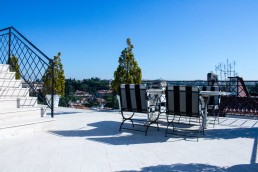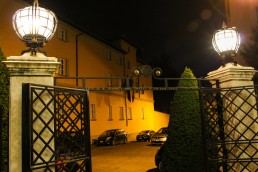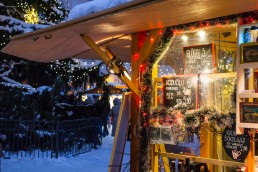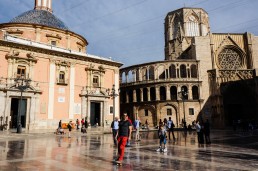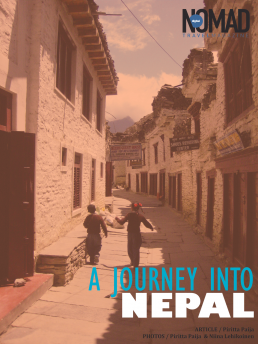Rome captured the imagination of Lord Byron like so many of my favorite writers. Since the Eternal City has a luxurious boutique hotel carrying the name and the mood of the man himself, how could you resist the splurge? This elegantly decorated Art Déco manor bursts tales of romance and past time grandeur offering a truly unique setting for romantic getaways.
Capturing the Essence of Lord Byron
George Gordon Byron, or simply Lord Byron, was one of the most prominent figures of British Romanticism in the 1800’s. Byron was also known as the most notorious poet of his times. His greatest legacy was the concept of Byronic hero: emotionally complex, dark and impulsive young man prone to strong feelings of desire and despair.
Lord Byron’s most celebrated work Don Juan depicts the protagonist as a rather naïve man seduced by women, not vice versa as the original legend goes. The poem was widely criticized for its immoral content, and it’s said to mirror Byron’s own rather complicated escapades.
“A man must travel, and turmoil, or there is no existence.”
–Lord Byron
The patrician villa of Hotel Lord Byron will transfer you in the era of eloquence and “the spontaneous overflow of powerful feelings” like the Romantics themselves put it. Belle Èpoque merges elegantly with 1930’s Art Déco: antique-filled salons combine warm colors and delicate ornaments with attention to period details. The walls are said to illustrate Lord Byron’s amorous lifestyle with original 1930’s masterpieces of elegant ladies.
32 guest rooms and suites are individually decorated with Art Déco furnishings and precious textiles. Some have a private terrace overlooking the gardens of Villa Borghese, and the upper suite has even a prestigious view of St. Peter’s church. Luxurious bathrooms with Carrara marble and toiletries by renowned perfumer Lorenzo Villoresi add a proper dash of decadence.
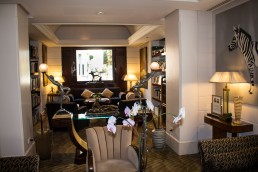
The Origins of the Hotel Lord Byron
Hotel Lord Byron feels like a home of a widely traveled aristocrat, like Byron himself. The name is no coincidence. Byron lived in Italy for 7 years during which he wrote Laments of Tasso, inspired by his visit in Torquato Tasso’s cell in Rome, and started Don Juan. In his own words, Rome “delighted” him. Although some historical junctions can be found, ultimately the name represents hotel owner Amedeo Ottaviani’s adoration for the works of Byron.
The history of the manor is interesting, too. The white limestone façade resulted in hotel’s nickname the “White House”. The property was designed by an anonymous architect in the 1930s. One of the early owners financed in part the restoration of Basilica San Francesco d’Assisi. At some point the house has been a girls’ school, when there obviously have been tens of tiny rooms instead of present spacious suites. Hotel Lord Byron was established in 1962.
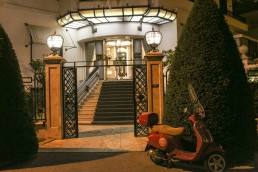
The Quiet Splendor of Villa Borghese
Hotel Lord Byron is a luxurious retreat from overly touristic center historical, yet walking distance from the main sights. Location is secluded, surrounded by embassies and old mansions, just few steps from gorgeous gardens of Villa Borghese, where Lord Byron himself used to visit, and where you can find his statue overlooking the estates.
Leisure 15 minutes stroll brings you through the pleasant Borghese park to the bustling Piazza del Popolo, from where you can easily wander through shopping streets to center historical in another 15 minutes or so. Some of the Rome’s most iconic sights like the Spanish Steps and Trevi Fountain will deftly fall into your route.
A side note for all literature fans out there: the neighborhood around the Spanish Steps and Piazza di Spagna is where Lord Byron and other expat artists lived in the 1800s. Keats-Shelley house (26 Piazza di Spagna) houses a small museum with a room where Keats died, an exclusive library with early printed volumes of Romantics, and studies of Byron’s work. Writers like Byron, Goethe, and Gogol frequented the nearby Antico Caffé Greco (86 Via Condotti).
Hotel Lord Byron is flamboyant and a bit decadent in its glamour like Lord Byron himself. Our stay in this exquisite 5-star hotel completed our Roman holiday in a way no other hotel could have done. If you appreciate art and history along with an intimate and sedate atmosphere, you cannot go wrong here.
Even if you end up staying somewhere else, I’d recommend an aperitif in the glamorous “Il Salotto” lounge bar just to enjoy the exquisite art collection of Hotel Lord Byron. Sapori del Lord Byron restaurant offers the regional specialities of Rome and their award-winning wine cellar has a private table for two for those special dinner moments.
*Disclaimer: While Hotel Lord Byron hosted our stay, all opinions are entirely our own.
You May Also Like to Read:
The Christmas Market of Tallinn’s Old Town
Feel the spirit of the Middle Ages at the Rathaus Square in Tallinn, filled with the tiny cottages selling everything from handicrafts to mulled wine.
Valencia’s Old Town Merges Famous Sights With Street Art
Narrow alleys of El Carmen host a weird mix: subcultures and street art, orange gardens, old mansions, and the most iconic sights of the city.


